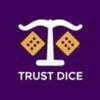If it’s true that slot plays change every millionth of a second at random, and that every play is completely random, how do you explain that the three “ovals” (the big hit) don’t come up as often as, say, “cherry-bar-bar” or any other small pay or loser? I mean, there are only so many pictures on those reels on the old mechanical slots, my favorites. Even if there’s only one oval on each reel, and more of the others, it still doesn’t seem right mathematically. Can you explain the odds? This really bothers me with the those huge jackpot connected slots around the country too- I mean, with millions of plays on hundreds of machines, how is it that the “big one” might only pay once in a year or so? Rich P.
More often than not, Rich, when something looks like a duck, and walks likes a duck, and turns out to be a duck, nobody’s surprised. But that doesn’t necessarily apply to today’s slot machines compared to those of yesteryear. Today’s slot machines are designed only in function and appearance to call to mind their old mechanical predecessors.
Those patriarchal machines of the past you are describing each had three reels, with 20 symbols on each reel. Mathematically, Rich, that works out to 20 X 20 X 20 possible combinations, equaling a 8000 to 1 chance of hitting the “big one.”
Sure, the hardware of an old mechanical may look something like today’s three reel/20 symbol slot machines, but the similarity stops there, and you would be wide of the mark in assuming that there is an 8,000 to 1 chance of hitting the grand whameroony.
Today’s hybrids of yesteryear all have computer chips operating inside them, and those 20 symbols are now just computerized stops, with as many as 256 imaginary symbols per reel. The chance of hitting the top-line jackpot is one in 256 X 256 X 256, equating to 16,777,216 to one. With 4 reels and 256 stops, try four billion and change.
It sort of works like this, Rich. Today’s electronic gizmos have fixed halting points that are determined by an electronic chip in the slot machine, that controls stepper motors to halt each reel at precisely a pre-appointed moment.
Now granted, Rich, that might not pass the smell test when it comes to randomness, but the pre-programming that is linked to the payoff protocol of the device is based on yet another microchip – the random number generator (RNG). By using an RNG microchip, you are guaranteed that each spinning reel has an equal shot of producing a jackpot.
With the RNG crunching possibilities, with millions polled every second, the final verdict is calculated at the exact millisecond that you either press the play button, or yank the handle, then that information is sent to an electronic chip to synchronize a particular halting point for each reel.
So although, Rich, you may set eyes on 20 symbols per reel, it’s the stops, not the symbols, that rule the roost here, and it truly is going to take millions of plays on hundreds of machines for the “big one” to hit.
Gambling Wisdom of the Week: “Percentages never lie. We built all these hotels on percentages. We stay rich on the percentages. You can lose faith in everything, religion and God, women and love, good and evil, war and peace. You name it. But the percentage will always stand fast.” –Mario Puzo, Fools Die




















